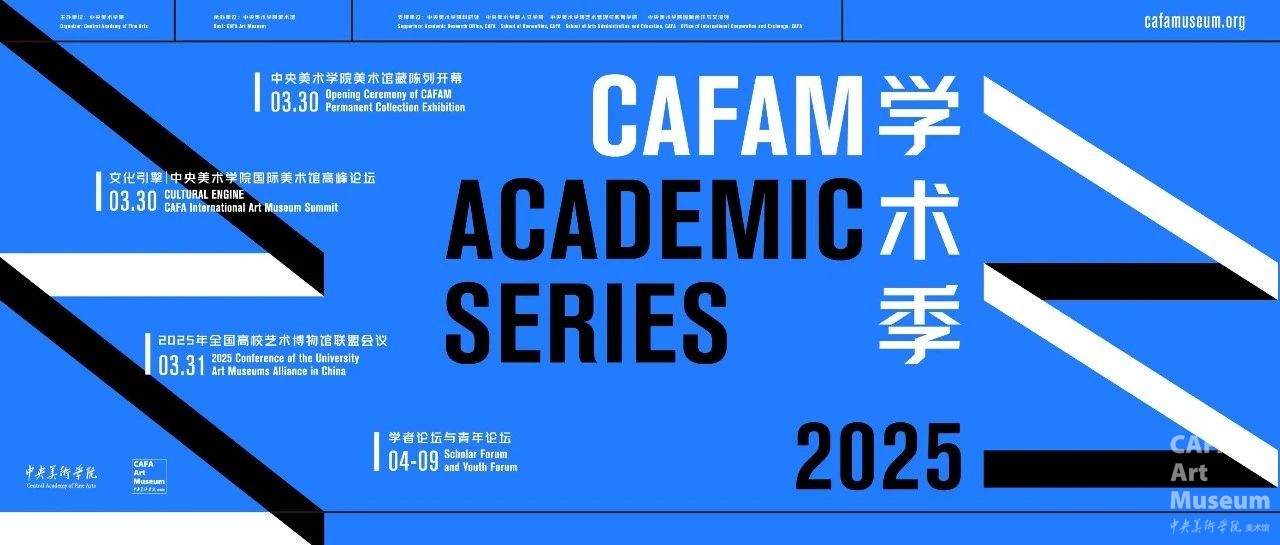

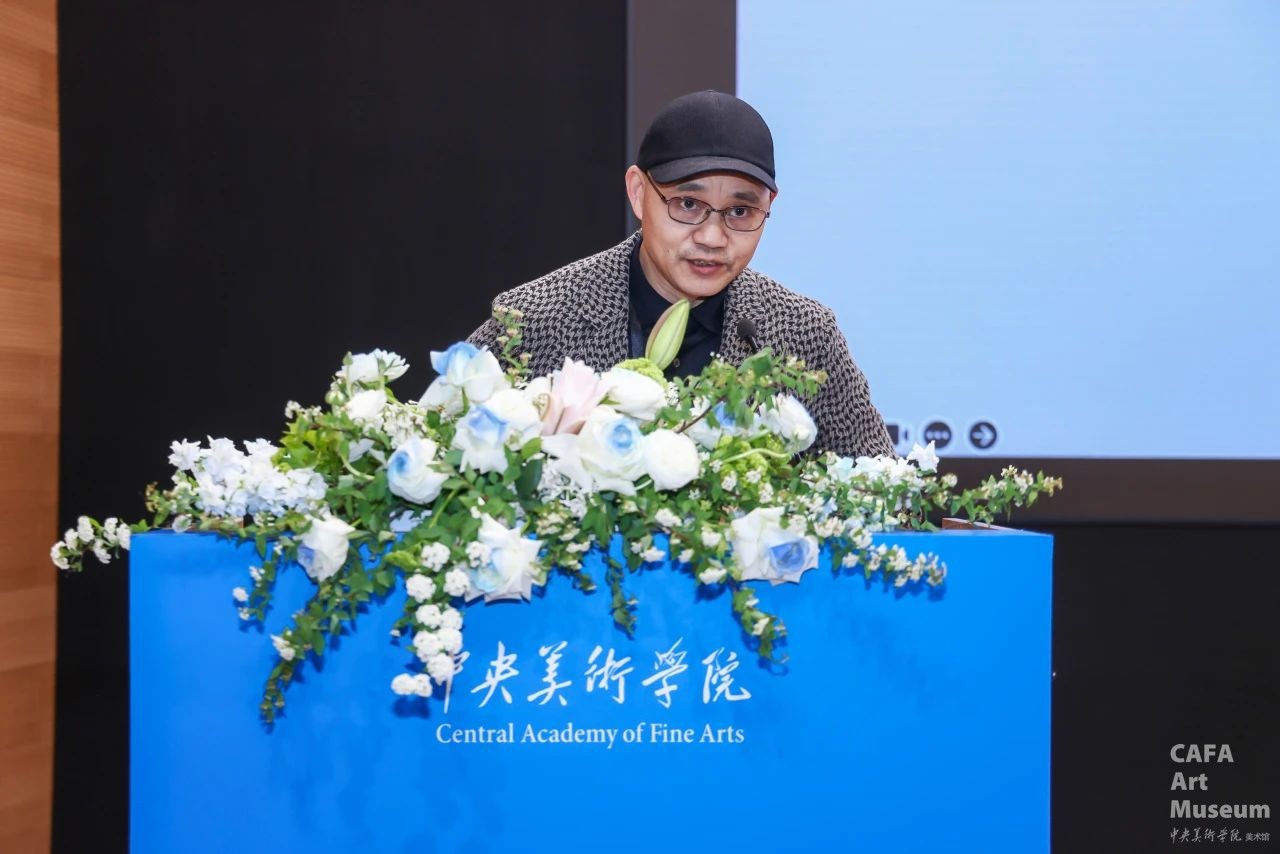
YingJinFei, director of Zhejiang Art Museum
「
At the "Cultural Engine –CAFA's International Art Museum Summit," Director Ying JinFei of theZhejiang Art Museum delivered a keynote titled "In the digital age, aesthetic perception is theprimary production force." He shared the Zhejiang Art Museum's practices in digital artexhibitions and cross-regional dialogues, emphasizing the importance of aesthetic education inshaping individual identity. He called for breaking away from the utilitarian tendencies ofeducation and encouraged the integration of aesthetic experiences in everyday life to supportstudents' thorough development. His speech revealed the evolving role of museums in thedigital era – as key agents in merging artistic creation and education – and offered newperspectives on balancing virtual and real integration with humanistic cultural values.
」
1.
Digital Art Exhibition Practices and Exploration
The Zhejiang Art Museum showcases a thoughtfully engaged exploration of digital art exhibitionpractices. Since 2016, its Oriental Wisdom series exhibition has merged China's traditionalculture with digital technology, accumulating experience for future digital art exhibitions. In 2018,the museum launched the Nanshan 138 project, which hosts four exhibitions annually featuringyoung artists—more than half of which involve digital art. This initiative has provided a vitalplatform for emerging digital artists and has played a key role in advancing the integration ofdigital art into the museum's broader exhibition system.
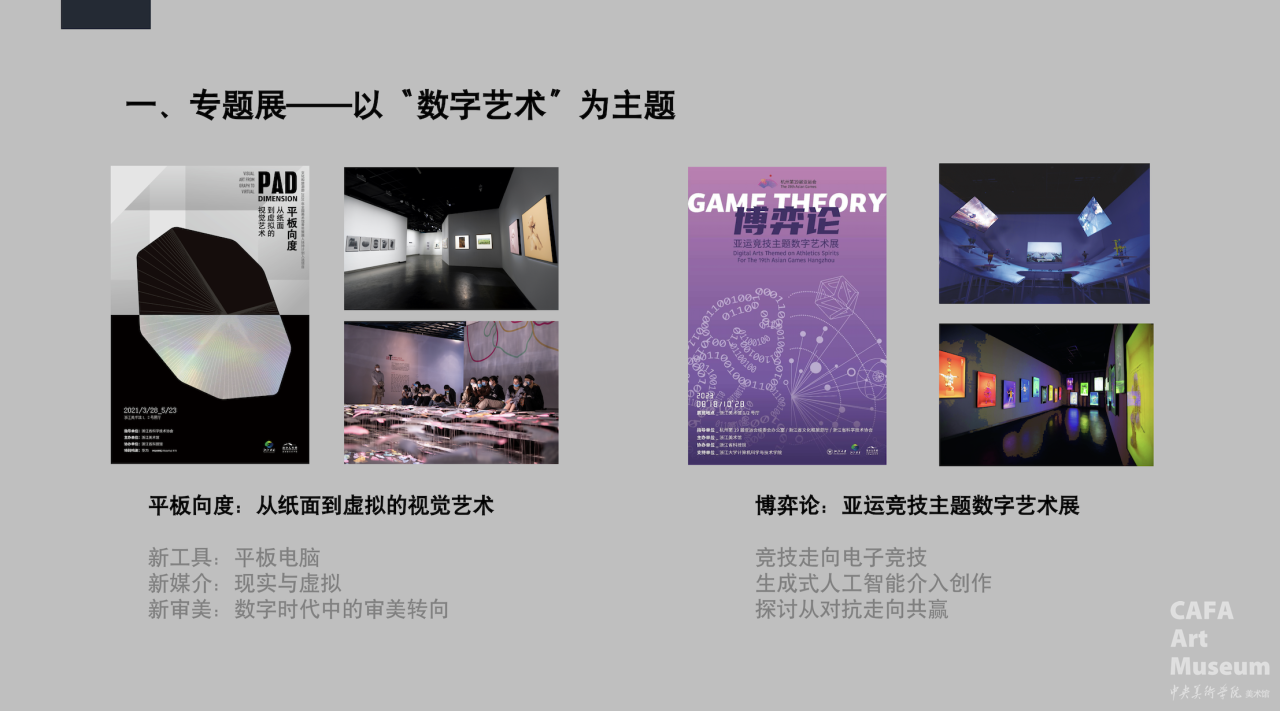
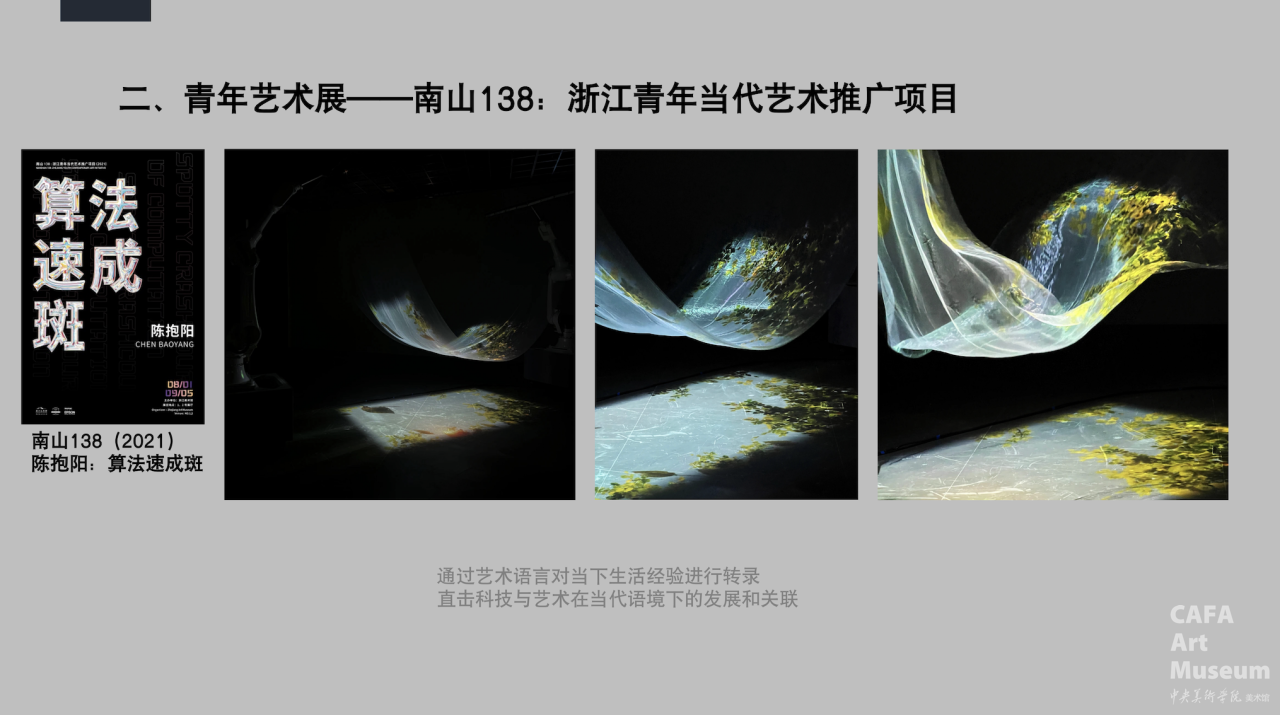
In 2021, the exhibition "Flat Dimension" set itself apart from the constraints of traditionalpainting. While conventional works are typically created on paper or canvas, this exhibitionintroduced the idea of painting on alternative surfaces such as digital glass, expanding theboundaries of artistic creation and boldly exploring new mediums of art shaped by digitaltechnologies. In 2023, taking advantage of the Hangzhou Asian Games' inclusion of Esports asan official competition, the museum launched a digital art exhibition themed "Game." Rooted intraditional Chinese philosophy, the concept of "Game" embodied complex dynamics of humaninteraction—competition and coexistence. Incorporating this concept into a digital art contextenriched the exhibition with cultural depth, offering audiences a fresh artistic experience andshowcasing the unique fusion of art and technology
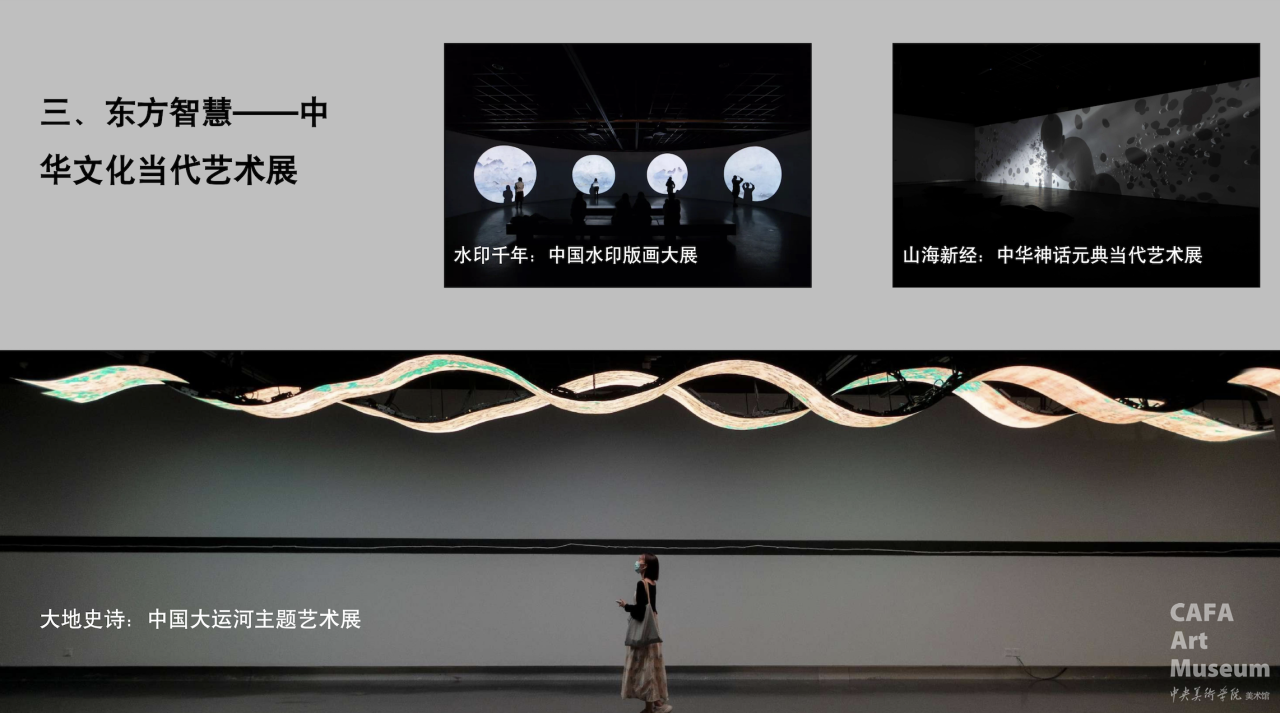
Additionally, the Zhejiang Art Museum has initiated thematic dialogues centred on digitaltechnologies. For the "Flat Dimension" discussion, experts from diverse fields—includingProfessor Pan Yunhe of Zhejiang University—were invited to engage in conversations spanningboth art theory and pure technology. While these exchanges revealed the challenges ofintegrating culture and technology, and participants often struggled to reach deep consensus,the interdisciplinary dialogue offered valuable insights and reference points for future explorationof effective pathways for the fusion of art and science.
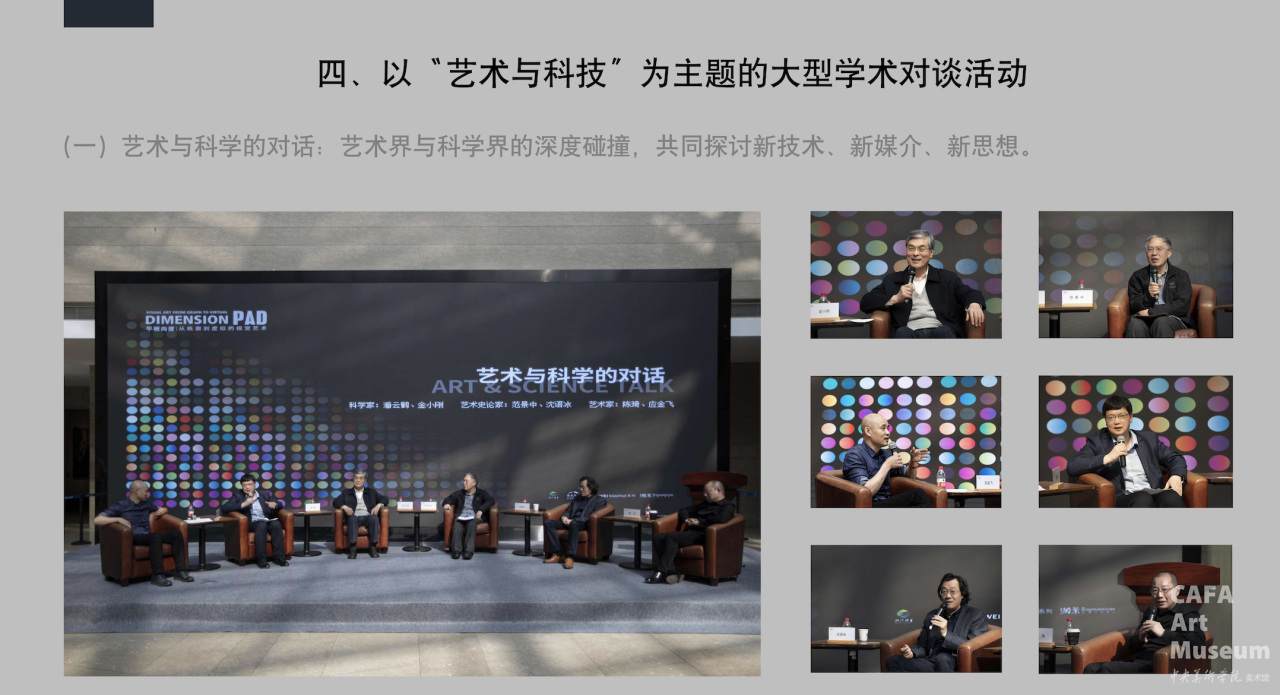

2.
Issues and Challenges in Aesthetic Education
Another significant part of the speech was focused on challenges with Aesthetic education.Director Ying Jin Fei pointed out that, from the year 1500, the importance of Historicaldevelopment has been recognized, using it as a lens to explore broader developmental patternsand to provide context for examining today's educational issues. He pointed out severalpersistent problems in the present education system. In terms of skill development, there is anoveremphasis on problem-solving while neglecting the equally important ability of students toask meaningful questions. This imbalance hinders the cultivation of original thinking andexploration. Educational philosophy today is heavily influenced by pragmatism, where utility isoften prioritized at the expense of fostering philosophical inquiry, critical thinking, and intellectualdepth. Evaluation methods are also skewed: many exams tend to focus on memorization ratherthan critical thinking, and standardized models of education often suppress individualdifferences and creativity. These issues collectively underscore a pressing need to reintroduceand emphasize aesthetic education as a vital component of comprehensive studentdevelopment.
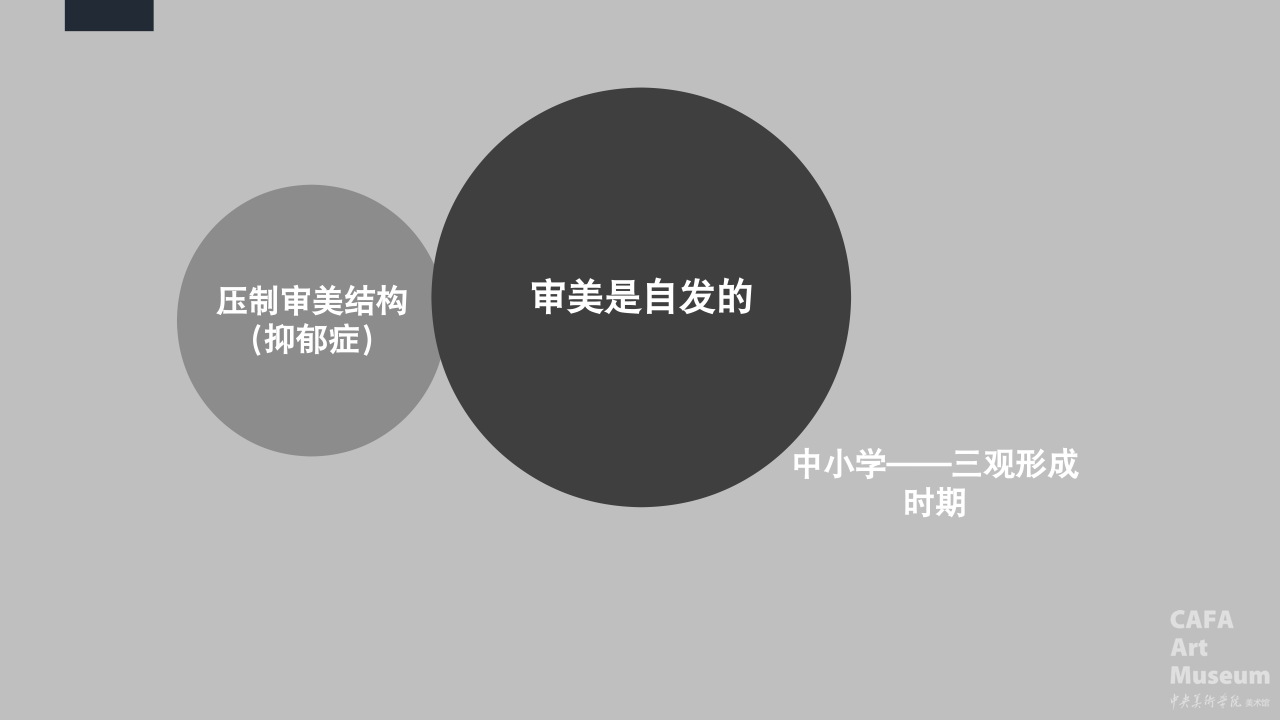
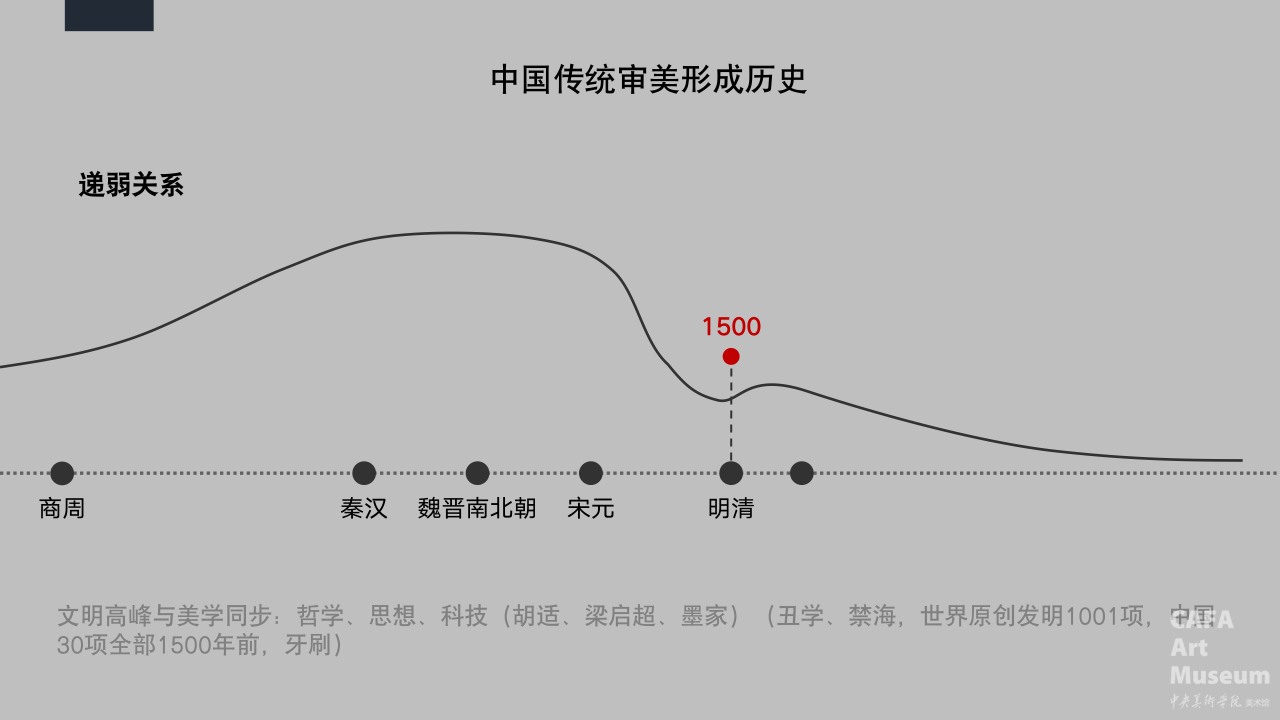
These educational challenges bring a series of negative influences, such as a growing numberof mental health issues in students. The Zhejiang provincial committee reported that Zhejianghigh school students' depression ratio reached 40%, and elementary school students reached10%, starkly warning us about the negative impacts of our educational system. Director Yingemphasized that aesthetic education should not be reduced to just a few art classes. Instead, itshould be viewed as a comprehensive process of personality development and characterbuilding embedded into daily life and education. During the formative years when children'svalues are being shaped, aesthetic education plays a crucial role across multipledimensions—including the cultivation of thought, life skills, and everyday sensibilities. Thisincludes teaching children how to dress appropriately, communicate effectively, and applymakeup correctly. While these may seem like trivial details, they are essential for students'personalized personalized growth and self-expression of identity. In reality, however, sucheveryday aesthetic behaviours are often constrained. Director Ying advocates for creating spacefor daily aesthetic practice, encouraging students to explore their individuality freely and nurturetheir ability to think and express themselves independently.
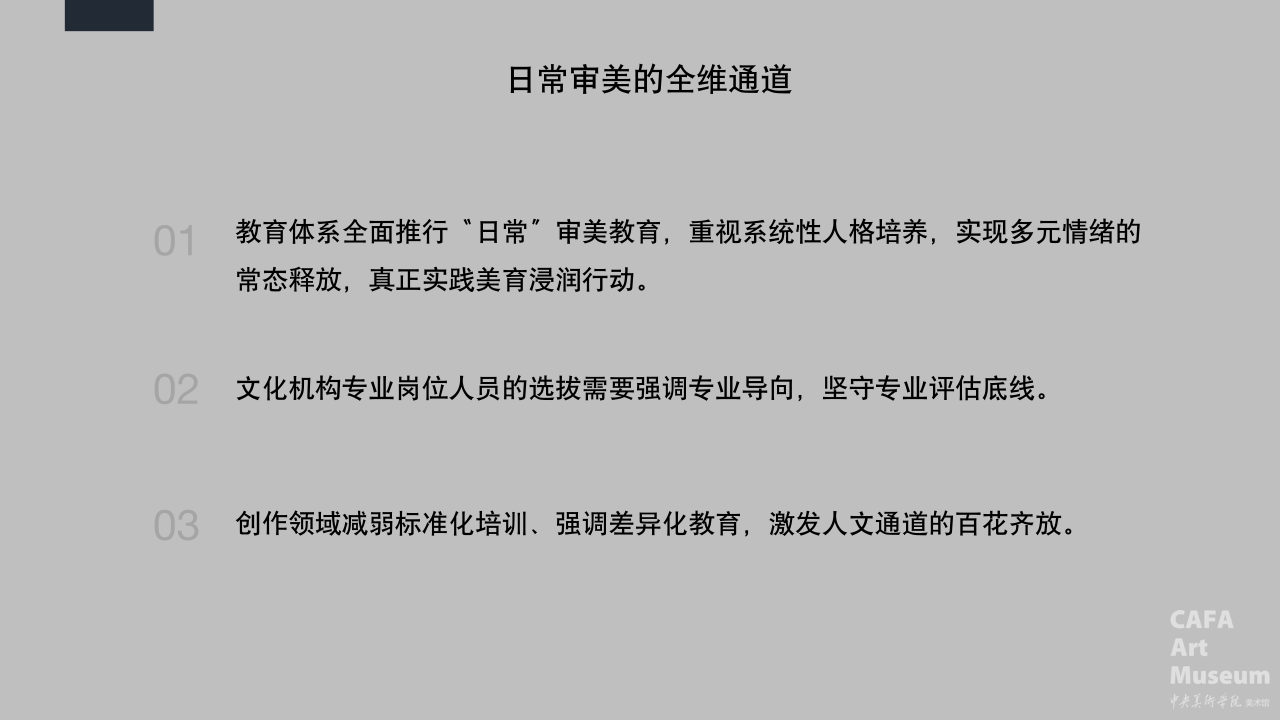
3.
Future Visions and Rectification of the Museum
In response to the deep-rooted aesthetic challenges in education, the Zhejiang Art Museum hasbeen actively redefining its role within the educational ecosystem. Starting last year, themuseum began integrating educational programs into its system, launching a series of activitiesclosely tied to daily life—such as workshops on dressing appropriately, effective communication,and more. These initiatives do more than offer audiences practical life skills; more importantly,they promote a broader aesthetic philosophy and personal expression. By encouragingawareness of beauty in daily life, the museum helps foster personal development—not just inappearance or behaviour, but in awareness, perception, and self-understanding. This marks aforward-looking vision where the museum becomes a living space for aesthetic cultivation andlifelong learning.
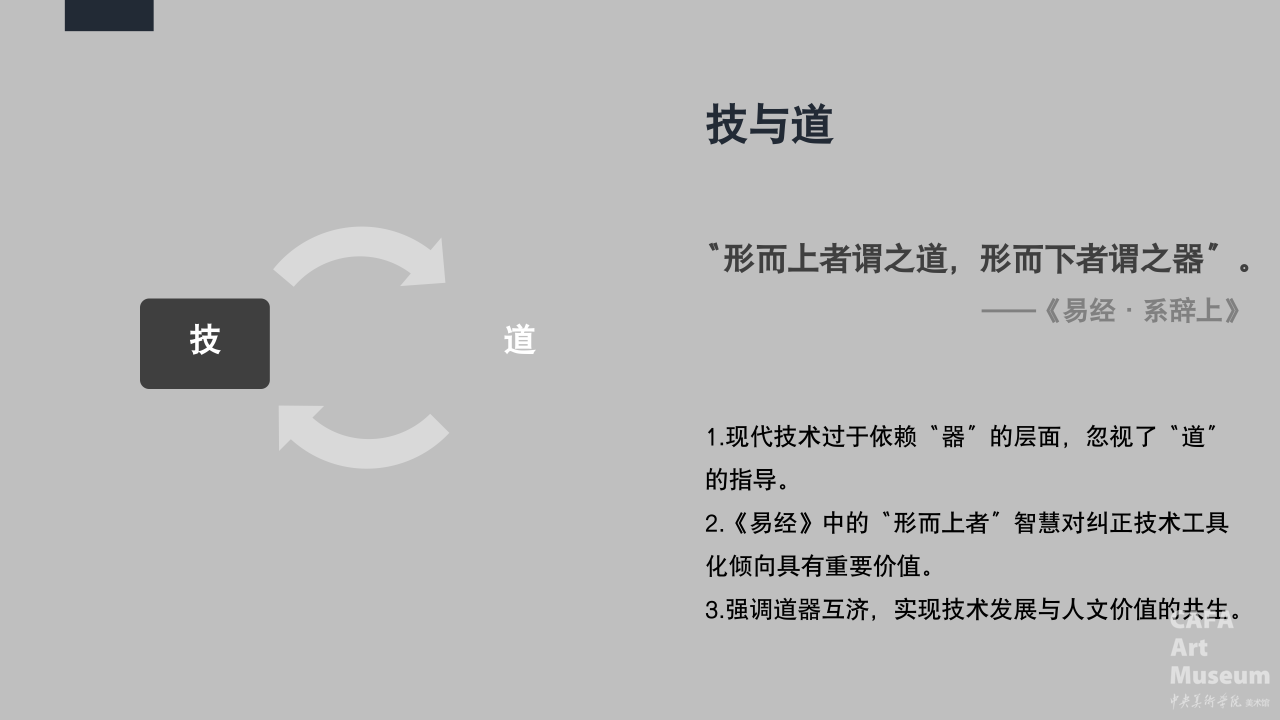
In the digital era, as the rapid pace of development continues to capture widespread attention,the speech emphasizes that a person's moral development and self-awareness are crucial andfundamentally essential. Aesthetic education and the cultivation of thought—often dismissed as"useless"—in fact play an irreplaceable role in shaping well-rounded individuals and advancingour society as a whole. The Zhejiang Art Museum's exploration offers meaningful insight into theintegration of art and education in the digital era. These efforts serve as valuable references forother museums and cultural institutions looking to undertake similar work, inspiring broaderattention to aesthetic education and driving the continued innovation and development of artand education in the context of a new era.
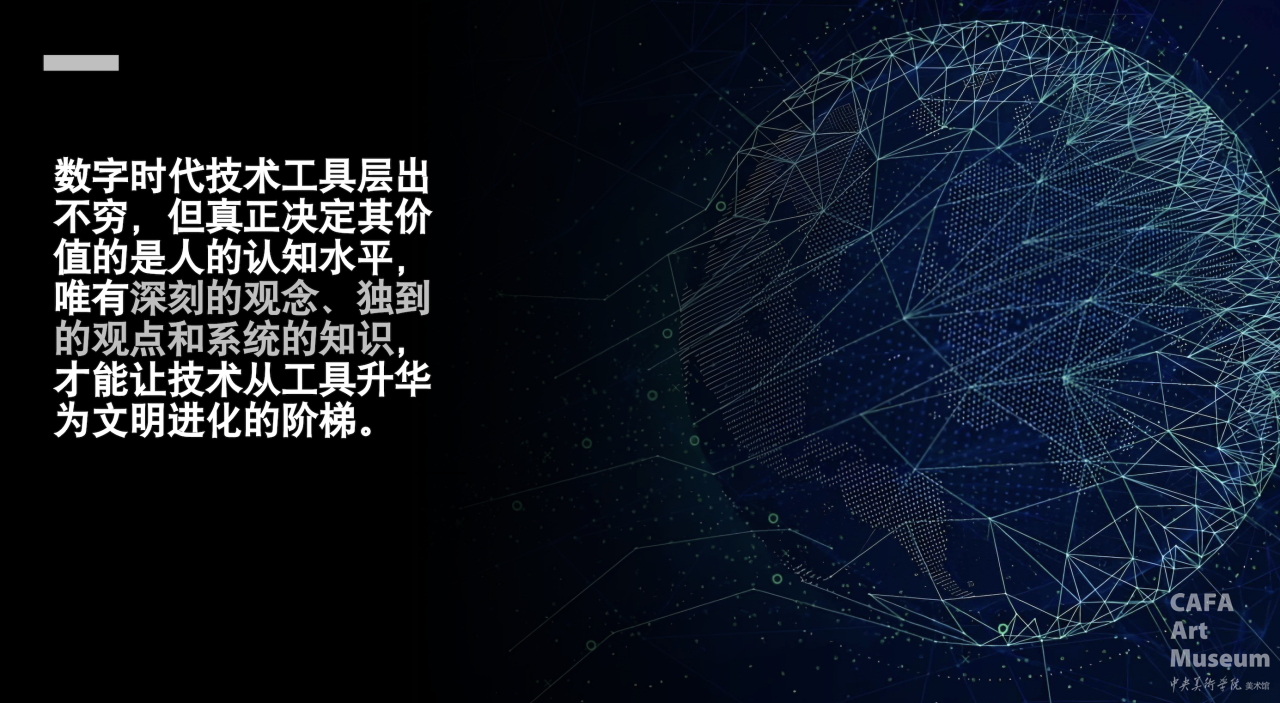
Speaker introduction
Ying Jinfei
Ying Jinfei is the Director of the Zhejiang Art Museum, a second-level professor, and a doctoraladvisor. He is a recipient of the State Council Special Government Allowance and has beenrecognised as a leading cultural talent in Zhejiang Province. He serves on national andprovincial committees, including the Chinese People's Political Consultative Conference(CPPCC) and the China Association for Promoting Democracy. He holds key positions in majorart institutions, including the China Artists Association and the Zhejiang Printmaking Institute.
∨
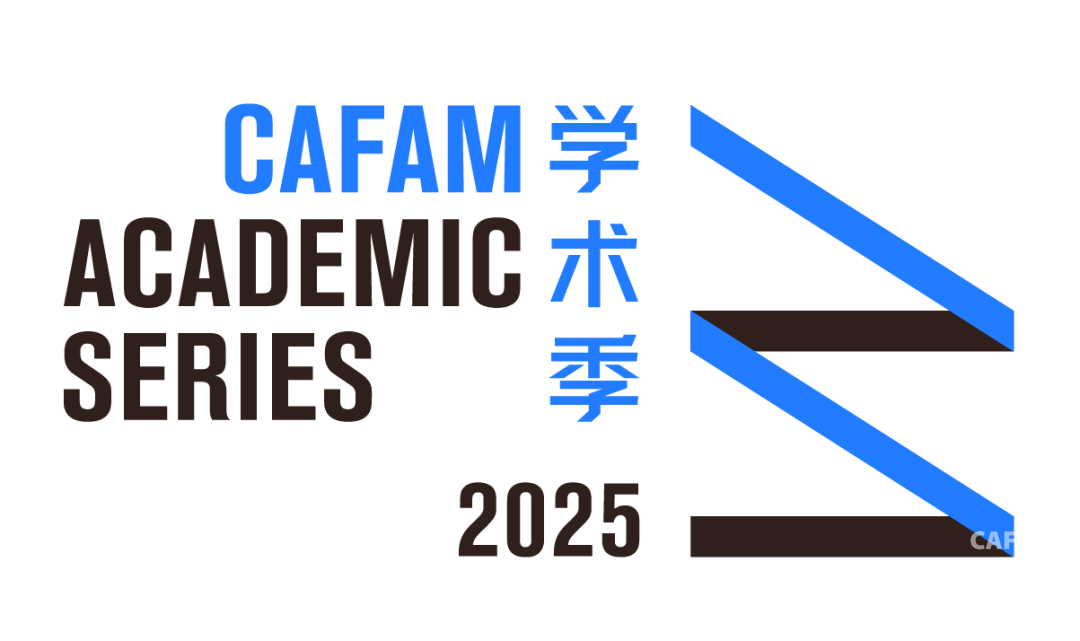
Chief Editor / He Yisha
Responsible Editor / Du Yinzhu
Text Organization / Wang Ruoxi
Editor / Feng Kaizhiqi
Translator / Mia
